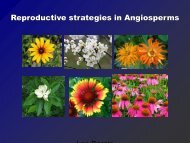ARTIFICIAL SWEETENERS: - University of Maryland
ARTIFICIAL SWEETENERS: - University of Maryland
ARTIFICIAL SWEETENERS: - University of Maryland
Create successful ePaper yourself
Turn your PDF publications into a flip-book with our unique Google optimized e-Paper software.
The Stevia plant produces several steviol glycosides 4 , with stevioside (“stevia”) and<br />
rebaudioside A (“rebiana”) in the highest percentage. Up until recently, the European<br />
Union and the US FDA have not granted companies wishing to use stevia compounds as<br />
a food additive permission, due to concerns that the chemical compounds may cause<br />
mutagenic or reproductive difficulties. For this reason, stevia and rebiana containing<br />
products started appearing in health food stores as “herbal supplements” – as the FDA<br />
has no regulatory rule over these products as they do over food additives. (20) Concerns<br />
over which glycosides were present in the food product and the manufacturing principles<br />
<strong>of</strong> the supplier kept the FDA suspect <strong>of</strong> any product containing stevia as a primary<br />
sweetener.<br />
Figure 14. Steviol(37 )<br />
Even though they each contain several glucose molecules, neither stevia nor rebiana are<br />
absorbed into the blood stream and therefore do not affect blood glucose. (37) Both<br />
4 "glycoside." A glycoside is a group <strong>of</strong> natural occurring molecules in which one or more glucose molecules are<br />
attached The American Heritage® Dictionary <strong>of</strong> the English Language, Fourth Edition. Houghton Mifflin Company,<br />
2004. Answers.com 19 May. 2009. http://www.answers.com/topic/glycoside




